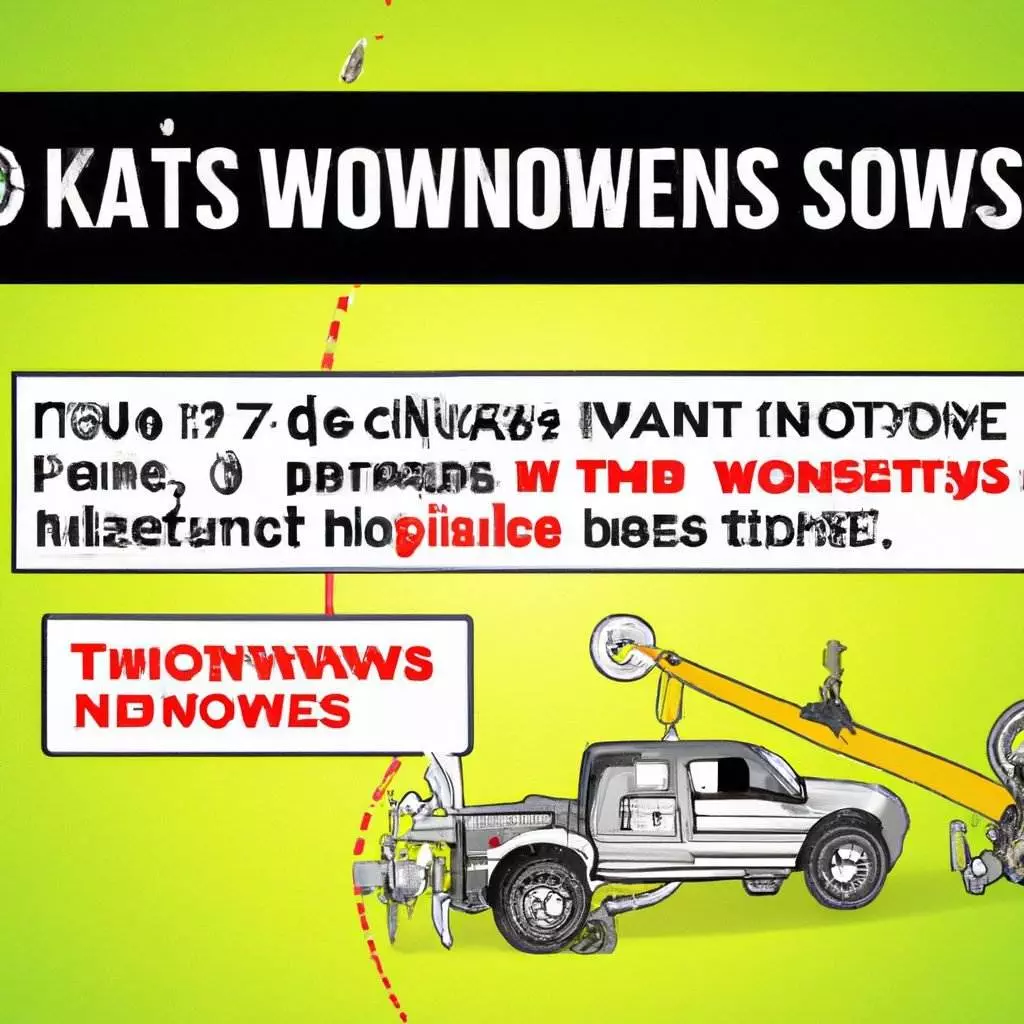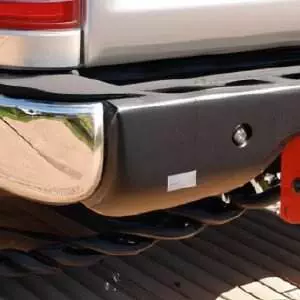In the world of automotive expertise, understanding the intricacies of a vehicle’s towing capacity is crucial for both manufacturers and consumers. Recognizing the importance of this key performance metric helps determine a vehicle’s capability to safely haul heavy loads, be it for recreational purposes or professional requirements. Delving into the evaluation process behind towing capacity ratings and uncovering the various factors considered ensures informed decision-making in selecting the right vehicle for your hauling needs.

What is Towing Capacity?
Definition of Towing Capacity
Towing capacity refers to the maximum weight that a vehicle can safely tow. It is the maximum load or trailer weight that a vehicle can handle without compromising its performance, safety, and stability. Towing capacity is an important specification to consider when choosing a vehicle for towing purposes.
Importance of Towing Capacity
Understanding the towing capacity of a vehicle is crucial for several reasons. Firstly, exceeding the towing capacity can put excessive strain on the engine, transmission, and other components, leading to accelerated wear and potential damage. Secondly, towing a load that exceeds the towing capacity can compromise the vehicle’s stability, handling, and braking ability, resulting in unsafe conditions on the road. Lastly, exceeding the towing capacity can have legal and insurance implications, as it may void warranties, lead to fines, and affect insurance coverage.
Factors Affecting Towing Capacity
Engine Power and Torque
The engine’s power and torque play a key role in determining the towing capacity of a vehicle. A more powerful engine with higher torque can generate the necessary force to tow heavier loads. Vehicles with larger engines or turbocharged engines often have higher towing capacities compared to those with smaller engines.
Transmission Type
The type of transmission in a vehicle can also impact its towing capacity. Generally, vehicles equipped with automatic transmissions tend to have higher towing capacities compared to those with manual transmissions. This is because automatic transmissions can provide smoother power delivery and better torque management, allowing for improved towing performance.
Axle Ratio
The axle ratio refers to the number of times the driveshaft rotates for each rotation of the axle. A higher axle ratio provides more torque to the wheels, which can increase the towing capacity. Vehicles with lower numerical axle ratios typically prioritize fuel efficiency over towing capability, while those with higher numerical ratios are more suited for towing heavy loads.
Suspension and Chassis
The suspension and chassis of a vehicle play a crucial role in supporting and stabilizing the weight of the towed load. Vehicles with stiffer suspensions and stronger chassis are generally better equipped to handle heavier loads and provide improved stability during towing. Upgraded suspension systems, such as heavy-duty shocks or air suspension, can enhance the towing capacity of a vehicle.
Braking System
The braking system is another vital consideration when it comes to towing capacity. Towing puts additional strain on the brakes, so vehicles designed for towing often feature larger brake systems or specialized trailer brake controllers. Adequate braking power is essential for safely slowing down and stopping both the vehicle and the load being towed.
Cooling System
Towing generates significant heat, particularly in the engine and transmission. A robust cooling system is necessary to prevent overheating and ensure optimal performance during towing. Vehicles designed for towing often have upgraded cooling systems, including larger radiators, transmission coolers, and engine oil coolers, to handle the increased heat generated.
Frame Strength
The strength and rigidity of a vehicle’s frame greatly impact its towing capacity. A stronger frame provides a more solid foundation, allowing the vehicle to better handle the stress and weight of towing. Vehicles with reinforced frames or specialized towing packages typically have higher towing capacities.
Gross Vehicle Weight Rating
The Gross Vehicle Weight Rating (GVWR) is the maximum weight allowed for a fully loaded vehicle, including passengers, cargo, and fuel. The towing capacity of a vehicle is influenced by its GVWR, as the weight of the vehicle itself affects how much additional weight it can safely tow.
Curb Weight
The curb weight of a vehicle refers to its weight without any additional passengers or cargo. It includes the weight of the vehicle’s standard equipment, fluids, and a full tank of fuel. The curb weight is an important factor in determining the towing capacity, as a heavier vehicle generally has a higher towing capacity.
Payload Capacity
Payload capacity refers to the maximum weight a vehicle can carry in terms of passengers and cargo. It includes the weight of all occupants, luggage, and any additional items loaded into the vehicle. The payload capacity influences the towing capacity, as it affects the total weight that the vehicle can handle.
Wheelbase
The wheelbase is the distance between the front and rear axles of a vehicle. A longer wheelbase can contribute to better stability and handling when towing heavy loads. It helps distribute the weight more evenly and reduces the likelihood of swaying or fishtailing. Vehicles with longer wheelbases often have higher towing capacities.
Different Rating Systems for Towing Capacity
SAE J2807 Standard
The Society of Automotive Engineers (SAE) developed the J2807 standard to establish consistent and reliable towing capacity ratings across different manufacturers. This standard ensures that towing capacities are measured using uniform criteria and testing procedures. Vehicles that comply with the SAE J2807 standard have undergone rigorous testing to determine their towing capabilities.
Manufacturer’s Ratings
In addition to the SAE J2807 standard, manufacturers establish their own towing capacity ratings for their vehicles. These ratings are based on their own testing and evaluation processes, which may vary from one manufacturer to another. It is important to understand the manufacturer’s ratings when considering a vehicle’s towing capacity.
GCWR vs. GAWR
The Gross Combined Weight Rating (GCWR) is the total weight of a vehicle, including its occupants, cargo, and trailer, that it is capable of safely towing. The GCWR takes into account the towing vehicle’s capabilities, as well as the weight limits of the trailer and its contents. On the other hand, the Gross Axle Weight Rating (GAWR) refers to the maximum weight that each axle can bear. Both the GCWR and GAWR are important considerations when determining a vehicle’s towing capacity.
Towing Package Upgrades
Many manufacturers offer optional towing packages that can enhance a vehicle’s towing capacity. These packages often include upgrades such as enhanced cooling systems, heavy-duty suspension components, integrated trailer brake controllers, transmission upgrades, and upgraded hitches and tow mirrors. Towing packages can provide additional capabilities and features specifically designed to improve the vehicle’s towing performance.
Vehicle-specific Limitations
It is essential to consider any vehicle-specific limitations that may affect its towing capacity. Factors such as frame and body construction, wheel and tire specifications, and fuel efficiency can impact a vehicle’s towing capabilities. Certain vehicle models or trim levels may have different towing capacities due to these limitations.
SAE J2807 Standard
Introduction to SAE J2807
SAE J2807 is a globally recognized standard developed by the Society of Automotive Engineers. Its purpose is to establish a consistent and reliable method for determining the towing capacity of light-duty vehicles. The standard aims to provide consumers with accurate and comparable information about a vehicle’s towing capabilities.
Testing Procedures
To adhere to the SAE J2807 standard, vehicles must undergo a series of standardized tests. These tests evaluate various aspects of the vehicle’s performance under towing conditions. The tests include assessing acceleration, braking, cooling system performance, and stability under different load and environmental conditions. By following consistent testing procedures, the standard ensures that the towing capacities declared by manufacturers are reliable and trustworthy.
Calculating Towing Capacity
Towing capacity is calculated based on the results of the standardized tests conducted according to the SAE J2807 standard. The testing evaluates the vehicle’s ability to tow both on level ground and on a grade. Factors such as acceleration, braking performance, and stability are considered in determining the maximum weight a vehicle can safely tow.
Benefits and Limitations
The SAE J2807 standard provides several benefits to consumers. It allows for accurate and comparable information across different vehicle manufacturers, making it easier to assess the capabilities of different vehicles. Consumers can make informed decisions about which vehicle best suits their towing needs based on standardized ratings. However, it is important to note that the standard applies only to certain light-duty vehicles and may not cover all vehicle types or classes.

Manufacturer’s Ratings
Using the Manufacturer’s Ratings
Manufacturers establish their own towing capacity ratings based on their own testing and evaluation processes. These ratings are typically provided in the vehicle’s specifications and documentation. It is important to refer to the manufacturer’s ratings when determining the towing capacity of a vehicle, as they reflect the specific capabilities of that vehicle model.
How Ratings Differ Among Manufacturers
Although there is an SAE J2807 standard in place, the manufacturer’s ratings can still vary among different vehicle manufacturers. This is because manufacturers may use different methodologies, testing criteria, or assumptions when determining towing capacities. It is crucial to understand these differences and compare ratings among manufacturers to ensure an accurate assessment of a vehicle’s towing capabilities.
Verifying Manufacturer’s Ratings
If you have doubts about a manufacturer’s towing capacity ratings, it is advisable to verify the information directly with the manufacturer or consult trusted sources of independent testing and evaluations. Some third-party organizations conduct their own tests and publish their findings to provide consumers with additional information and verification of manufacturer’s claims.
GCWR vs. GAWR
Gross Combined Weight Rating (GCWR)
The Gross Combined Weight Rating (GCWR) is a significant factor in assessing a vehicle’s towing capacity. It represents the maximum allowable weight of both the towing vehicle and the trailer, including all occupants, cargo, fuel, and any additional equipment. The GCWR takes into account the vehicle’s capabilities as well as the limitations of the trailer itself.
Gross Axle Weight Rating (GAWR)
The Gross Axle Weight Rating (GAWR) refers to the maximum weight that each axle of a vehicle is designed to support. It is important to consider the GAWR when determining the towing capacity, as exceeding the weight limits on one or both axles can compromise the vehicle’s stability, safety, and handling performance. The GAWR contributes to the overall towing capacity of the vehicle.
Towing Package Upgrades
Enhanced Cooling Systems
Towing generates significant heat in the engine and transmission. Enhanced cooling systems, such as larger radiators, transmission coolers, and engine oil coolers, help dissipate this heat effectively. These upgrades are particularly important when towing heavy loads or traveling in hot climates. Improved cooling systems ensure that the engine and transmission operate within their optimal temperature ranges during towing, promoting longevity and reliability.
Heavy-Duty Suspension
Upgrading to a heavy-duty suspension system can significantly improve a vehicle’s towing capacity. Heavy-duty shocks, springs, and other suspension components are designed to handle the extra weight and stress imposed by towing. They provide enhanced stability, minimize body roll, and reduce vibrations, resulting in a smoother and safer towing experience.
Integrated Trailer Brake Controllers
An integrated trailer brake controller is an essential upgrade for towing heavy loads. It allows for synchronized braking between the vehicle and the trailer, ensuring that both come to a safe and controlled stop. By applying the trailer’s brakes simultaneously with the vehicle’s brakes, integrated controllers prevent trailer sway, lessen the load on the vehicle’s brakes, and improve overall braking performance.
Transmission Upgrades
Upgrading the transmission can greatly enhance a vehicle’s towing capacity. Transmissions equipped with additional gears, such as six or eight-speed automatic transmissions, provide better torque management and smoother power delivery. They can handle larger loads more efficiently, resulting in improved towing performance, fuel economy, and durability.
Upgraded Hitches and Tow Mirrors
Choosing the right hitch and tow mirrors is crucial for safe towing. Upgraded hitches with higher weight capacities and improved sway control provide a secure connection between the vehicle and the trailer. Tow mirrors with extended arms and wider viewing angles enhance visibility, allowing for better monitoring of the trailer during towing maneuvers.
Vehicle-specific Limitations
Frame and Body Construction
The frame and body construction of a vehicle can affect its towing capacity. Vehicles with reinforced frames and robust body structures are typically better suited for towing heavy loads. On the other hand, vehicles with unibody construction or lightweight materials may have lower towing capacities due to their structural limitations. It is essential to consider the vehicle’s construction when assessing its towing capabilities.
Wheel and Tire Specifications
The wheel and tire specifications of a vehicle are important factors in determining its towing capacity. Tires that are rated to handle higher weight loads and designed for towing applications can significantly contribute to a vehicle’s towing capabilities. Additionally, wheel sizes, load ratings, and tire pressures impact a vehicle’s stability, handling, and overall towing performance.
Fuel Efficiency
Towing heavy loads can have a considerable impact on a vehicle’s fuel efficiency. The additional weight increases the engine’s workload, resulting in increased fuel consumption. It is important to consider the fuel efficiency implications of towing when planning longer trips or frequent towing activities. Opting for vehicles with more fuel-efficient engines or utilizing towing packages designed for improved fuel economy can help mitigate the impact on fuel consumption.
Understanding Towing Capacity Ratings
Understanding Towing Labels
Towing capacity ratings are typically displayed on various labels or placards affixed to the vehicle. These labels provide information about the vehicle’s towing capacities, including the maximum weight it can tow and any specific requirements or limitations. It is essential to locate and understand these labels to ensure safe and responsible towing practices.
Matching Tow Vehicles and Trailers
Matching the tow vehicle and trailer is crucial for safe towing. The weight of the trailer, including its contents, should not exceed the towing capacity of the vehicle. Additionally, the tow vehicle’s capabilities, such as braking power and stability control systems, should be sufficient to handle the specific trailer being towed. Properly matching tow vehicles and trailers is essential for maintaining stability, control, and overall safety during towing.
Determining Safe Towing Capacity
To determine the safe towing capacity, it is essential to consider all the factors discussed above, including the manufacturer’s ratings, GCWR, GAWR, and any vehicle-specific limitations. Calculating the weight of the trailer and its contents accurately is crucial. It is recommended to consult the vehicle’s documentation, manufacturer’s specifications, or seek professional advice to ensure that the chosen tow vehicle can safely handle the intended towing load.
Importance of Safe Towing Practices
Adhering to safe towing practices is essential to prevent accidents, damage to the vehicle and trailer, and ensure the safety of oneself and others on the road. Beyond knowing the towing capacity, it is crucial to properly load and distribute the weight within the trailer, secure the load properly, ensure proper lighting and signaling, conduct regular maintenance on the vehicle and trailer, and practice safe driving techniques when towing. Being aware of safe towing practices and following them diligently can help mitigate risks and ensure a smooth and safe towing experience.
The Consequences of Exceeding Towing Capacity
Vehicle Damage and Safety Risks
Exceeding the towing capacity can lead to severe consequences for both the vehicle and its occupants. The excessive strain placed on the engine, transmission, suspension, and braking systems can result in premature wear, overheating, and potential component failures. This not only increases the risk of expensive repairs but also compromises the safety and reliability of the vehicle, posing a significant risk to the driver, passengers, and other road users.
Legal and Insurance Implications
Exceeding the towing capacity can have legal and insurance implications. It is essential to comply with local laws and regulations regarding towing capacities. Operating a vehicle beyond its rated capacity may result in fines, penalties, or even vehicle impoundment. Moreover, insurance coverage may be affected if an accident occurs while towing a load that exceeds the vehicle’s towing capacity. Insurance companies may deny claims or offer limited coverage in such cases.
Decreased Control and Performance
Towing a load beyond the vehicle’s towing capacity can significantly impact its handling, stability, and braking performance. The increased weight can cause the vehicle to become unstable, prone to swaying, or difficult to control. Braking distances can become significantly longer, increasing the risk of accidents and collisions. The overall driving experience can be compromised, potentially leading to dangerous situations on the road.
In conclusion, understanding towing capacity is crucial for safe and successful towing. Factors such as engine power and torque, transmission type, axle ratio, suspension, braking system, cooling system, frame strength, and various weight ratings all play a role in determining a vehicle’s towing capacity. Different rating systems, including the SAE J2807 standard and manufacturer’s ratings, provide guidance, and it is important to consider any vehicle-specific limitations. Upgrading with towing packages and practicing safe towing practices are essential for optimal performance and safety. Exceeding towing capacity can lead to vehicle damage, safety risks, legal and insurance implications, and decreased control and performance. By understanding and respecting towing capacity ratings, you can ensure a safe and enjoyable towing experience.


